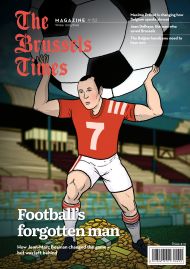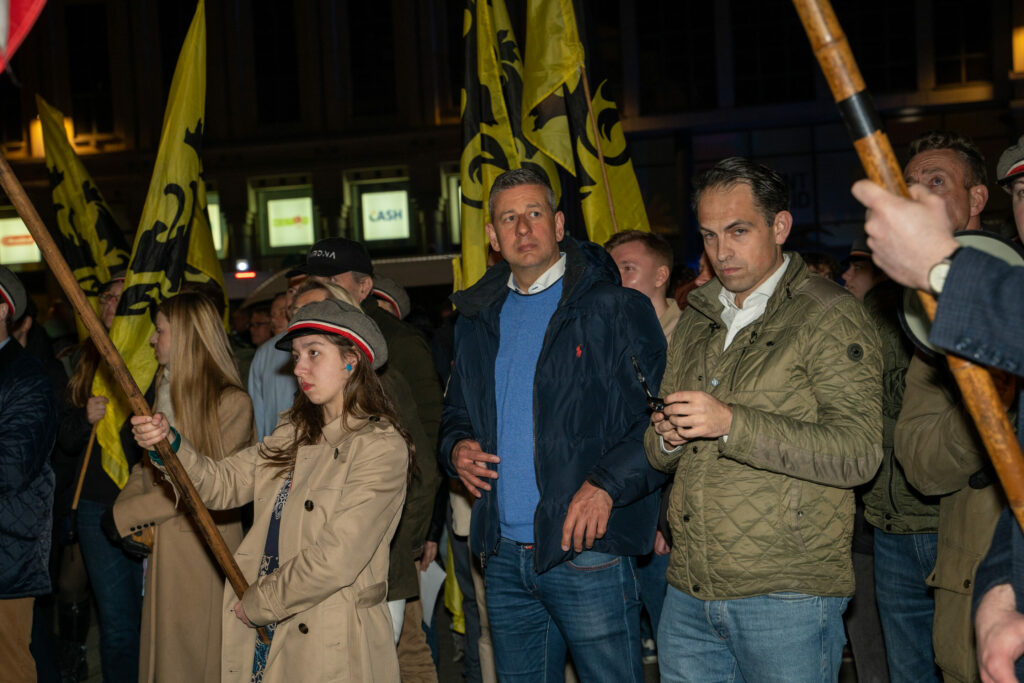Thursday evening saw the progressive Flemish city of Ghent become a venue for an ultranationalist student march, a rally for the far-right that was met with counter-protests and clashes that required intervention from riot police. Our reporter Kosmos Khoroshavin and photographer Vicente Torre were on the ground and followed the marchers through Ghent.
The event was promoted on social media by radical Flemish nationalists, billed as the “Generation Remigration”, calling for the forced deportation of non-natives from Belgium. The Brussels Times was present, arriving at Woodrow Wilson Square in the south of the city to witness the march. It was organised by NSV (Nationalist student movement), a radical nationalist student fraternity with extreme rhetoric and close ties to the far-right Vlaams Belang party, which came joint-second in the national elections in June.
Vlaams Belang leader Tom van Grieken, himself an NSV alumnus, was in attendance alongside important far-right youth figure Dries Van Langenhove, recently sentenced to a 1-year prison term for inciting violence, and a notorious Austrian far-right-activist/ex-neo-Nazi Martin Sellner.
Just 30 minutes before the protest was due to start, few participants were in evidence. But there was a strong security presence with dozens of police cars in the area, hundreds of officers, and specialized units in anti-riot armour with shields. A leftist counter-protest was taking place elsewhere in the city, though many were wondering if the two demonstrations would clash.
But the square quickly filled, as the crowd swelled with nationalist sympathisers, waving yellow flags with the Flemish lion and holding signs with the faces of people murdered by illegal immigrants throughout Europe. Banners bearing radical slogans about immigration were unfurled and the atmosphere grew more tense.
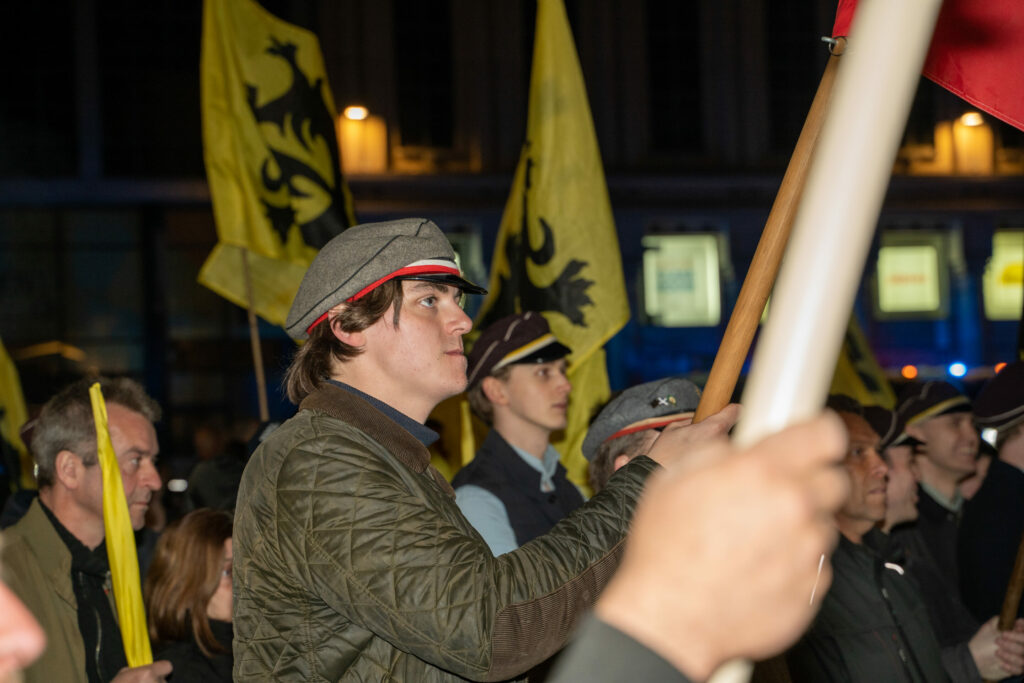
Credit: Vicente Torre / The Brussels Times
Soon there were police helicopters overhead, occasionally flashing lights onto the square. A huge water cannon passed in the distance.
Most attendees are young students. Many seem out of place in their bizarre uniforms: flap caps and sashes. They refuse to give interviews, all saying that only “media-trained senior members” can speak to press.
Skirmishes and projectiles
The march started and the crowd pushed forward into the streets of Ghent. With drums beating accompanied by an accordion and chants “Europe, Youth, Revolution”, there's no ignoring them.
I split off to ask bystanders what they think. Many are confused and reluctant to speak. One student expressed disapproval and I was absorbed into an unplanned student counter-protest. “No fascists in our town,” was the cry.
Anti-riot police suddenly blocked the way in an effort to keep the rival groups apart. An officer pushed me lightly with a baton, commanding me to get back and keeping me away from the nationalist group. My press card had no effect so I spent the next 30 minutes trying to get around police blocks. But these were well organised to block every off-street and choke points like bridges, effectively encircling the nationalists.
And as well as peaceful counter-protesters there were smaller groups of antifascists all dressed in black, hooded and masked. One of the groups I saw spoke in French about their plans to get to the nationalists, some of them eager to resort to violence.
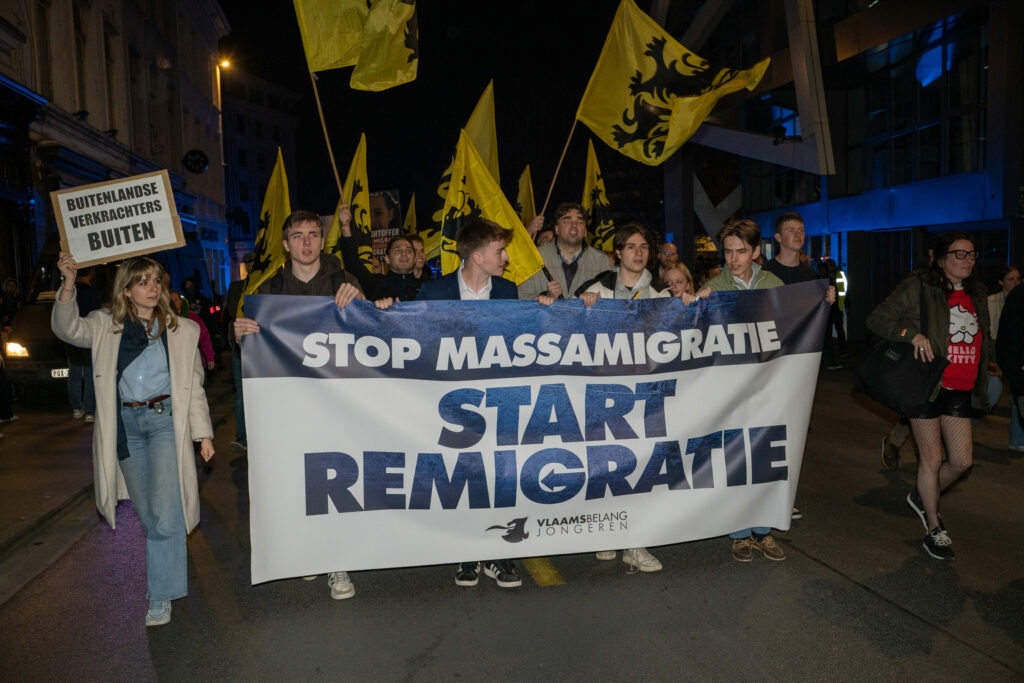
Credit: Vicente Torre / The Brussels Times
The radical wing of the counter-protest wasn't shy of aggression and many were arrested. Some hid in buildings and threw glass bottles, fireworks and pots of yoghurt from windows and rooftops. One group of hooded people tried to force through the police blockade at the back of the march. The police countered, arresting most of the provocateurs while other non-violent protesters scattered.
I was eventually able to get behind the police line and rejoin my colleague in the nationalist group. Things were heated here as well, and many ultranationalists weren’t from Ghent. Smaller groups had covered their faces, some looking like skinheads. Many were from far-right groups of the Republic of Ireland and could be heard speaking Irish.
Whenever the march passed a counter-protest, both sides exchanged hateful comments across the police line. Sometimes groups would try to break past police and had it not been for a strong push-back from security forces, serious violence would have taken place.
Sellner speech
The march circled back to Woodrow Wilson Square, now enclosed by police. Counter-protesters continued shouting "No fascists in our town" as Martin Sellner took the stage.
A leading figure in Austria’s "New Right" and a former neo-Nazi, he was the event’s star attraction. Sellner is banned from entering the UK and Switzerland and has been denied entry to the US. His speech, delivered in English, began with a call to "ship the illegals and rapists out of Europe." He picked up the march’s slogan, declaring that the youth’s "biggest task" is immigration.
"Democracy is eating democracy alive," Sellner claimed, going on to twist Martin Luther King Jr.’s famous speech in saying he has a dream of "remigration, of planes, trains and boats." This, he said, would be "moral, economically beneficial, and logistically possible."
He repeatedly emphasised the need to "preserve European identity," calling for Europe to become a "no-go zone for illegal migrants." There were multiple references to the "Great Replacement" conspiracy theory. He finished with an invitation to an ultranationalist march in Vienna.
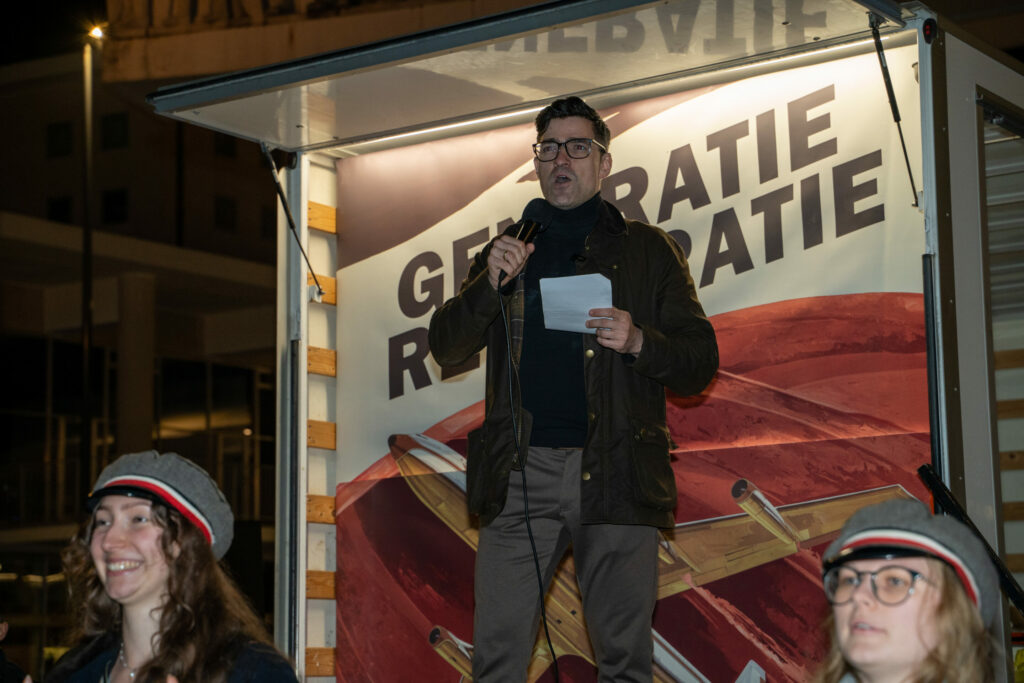
Martin Sellner speaking to an enthusiastic crowd. Credit: Vicente Torre / The Brussels Times
The heart of European nationalism
The NSV has roots in Flemish nationalism claiming the goal of preserving Flemish culture in an increasingly multicultural Belgium. It has long-standing ties with Vlaams Belang though maintains that it has no affiliation with any political party. During the protest, it was joined by Vlaams Belang's youth wing.
NSV has shifted its focus towards Europe more broadly, emphasizing “white European” identity rather than concentrating solely on Flanders. Recently, NSV’s Telegram channel has begun including posts in English and other European languages. The group also frequently reposts activities of other nationalist student organizations across Europe, hinting at a growing global network of these groups online.
Telegram is often favoured by far-right figures for its lack of censorship. In Ghent, members of the Irish nationalist party An Páirtí Náisiúnta attended events alongside Voorpost, a far-right organisation active in South Africa, Flanders, and the Netherlands.
It's clear from last nights events, and the organisation and mobilisation of "foreign" elements, that NSV, and organisations like them, are broadening both their reach and appeal beyond narrow regional identities. In just a short time their voice and their presence have become louder and more visible, and their supporters more diverse.
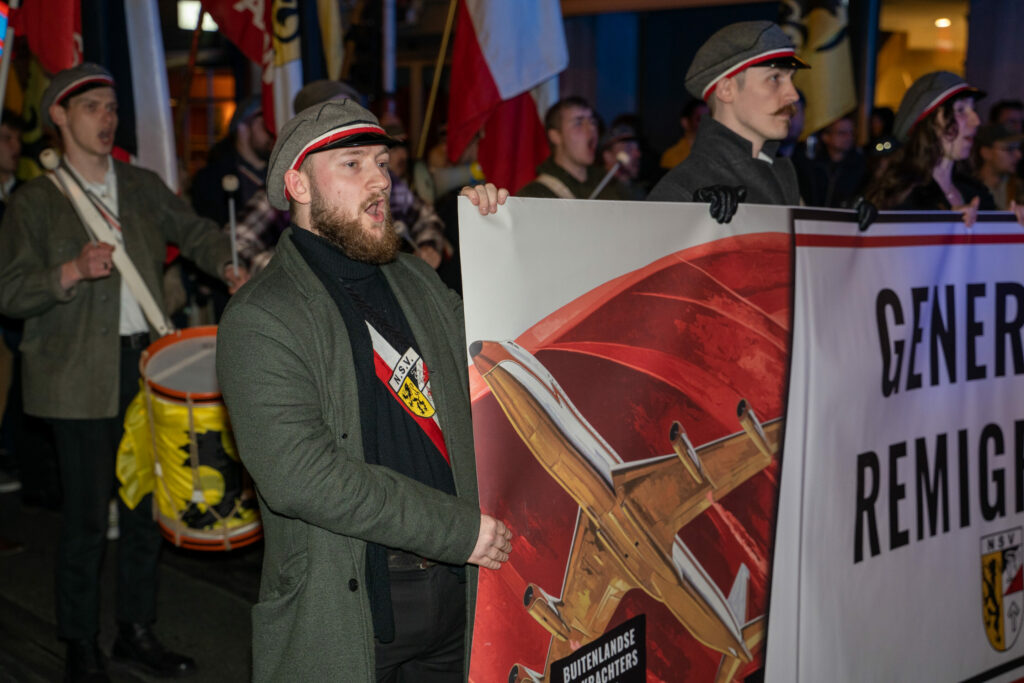
Credit: Vicente Torre / The Brussels Times
